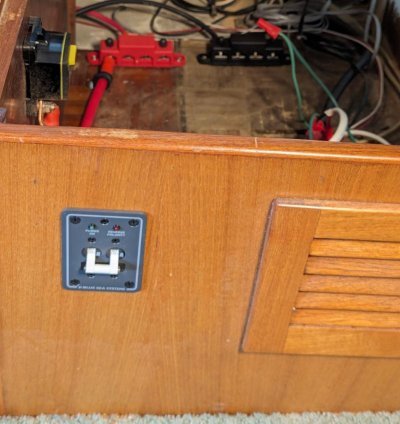Delta Riverat
Guru
- Joined
- Feb 16, 2022
- Messages
- 1,228
- Location
- Stockton
- Vessel Name
- Dream Catcher
- Vessel Make
- 1979 Island Gypsy 44 Flush Aft Deck
Now that the TV has a place, time for the audio -
I replaced the flybridge stereo last year and happy with the results. Went with the same Kicker (gauge style, 3 inch hole) head unit I used before. Saloon stereo was non-op and while going through the wiring for the replacement I think I found the problem. One speaker wire shorted and blew the receiver which was a Sony home unit with 8 tiny speakers, 4 in the saloon, 2 in forward cabin and 2 in aft stateroom.
Replaced the 4 saloon speakers with Cambridge Audio Minx 22 and added the much needed subwoofer. Made up this custom panel to contain the head, switches for the cabin amp and the subwoofer and an aux switch so I can input from any outside source or select the TV output.

That Alpine powered sub just fits in there sweet eh?
Next trip will be to mark the speaker leads and fix the bad wire and install the mating connectors so everything on that front panel can be unplugged easy for service.
I replaced the flybridge stereo last year and happy with the results. Went with the same Kicker (gauge style, 3 inch hole) head unit I used before. Saloon stereo was non-op and while going through the wiring for the replacement I think I found the problem. One speaker wire shorted and blew the receiver which was a Sony home unit with 8 tiny speakers, 4 in the saloon, 2 in forward cabin and 2 in aft stateroom.
Replaced the 4 saloon speakers with Cambridge Audio Minx 22 and added the much needed subwoofer. Made up this custom panel to contain the head, switches for the cabin amp and the subwoofer and an aux switch so I can input from any outside source or select the TV output.

That Alpine powered sub just fits in there sweet eh?
Next trip will be to mark the speaker leads and fix the bad wire and install the mating connectors so everything on that front panel can be unplugged easy for service.












